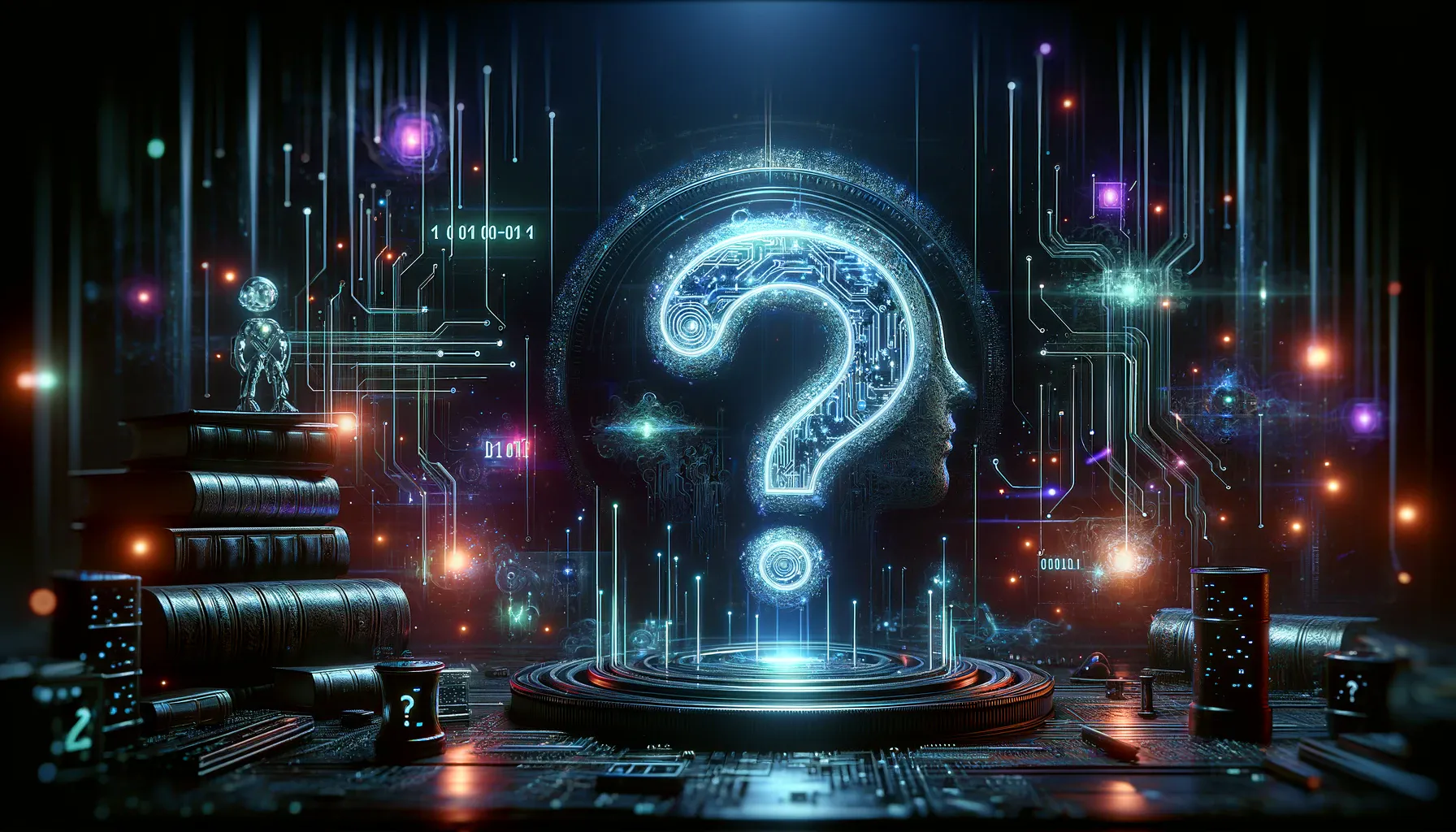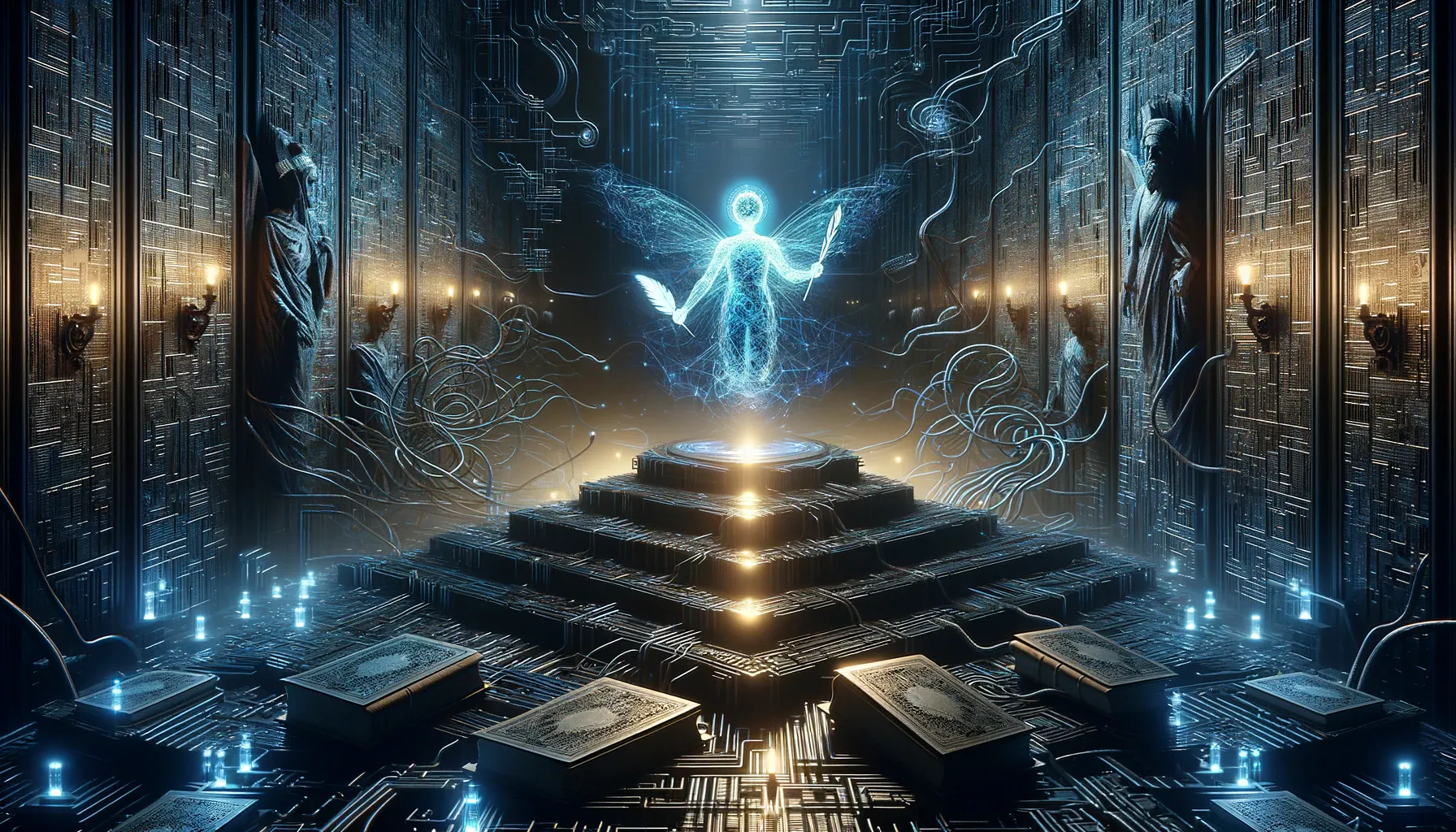Table of Contents
In the ever-evolving landscape of digital innovation, the rise of AI-generated content has introduced a myriad of challenges within the intricate web of copyright regulations. As technology continues to push the boundaries of creativity, it becomes imperative to explore the complex relationship between artificial intelligence, content creation, and the legal framework that governs intellectual property.
The Rise of Digital Innovation in Content Creation
Digital Innovation is propelling a transformative era in content creation, reshaping how we generate and consume information. AI, with its capacity to emulate human intelligence and creativity, stands at the forefront of this revolution.
AIVA – Revolutionizing Music Composition: AIVA (Artificial Intelligence Virtual Artist) is revolutionizing the music industry by showcasing the capabilities of AI in music composition. This innovative platform uses machine learning algorithms to compose music that rivals compositions by human artists. AIVA’s success highlights the fusion of human creativity and Digital Innovation in the domain of music.

Understanding AI-Generated Content: A Brief Overview
AI-generated content is a transformative force in creative fields. Digital Innovation, marked by advancements in algorithms and machine learning, has propelled machines to simulate human cognitive functions across various applications.
Text Generation: Digital Innovation in AI has led to the development of language models like OpenAI’s GPT-3. This model can generate coherent and contextually relevant text, demonstrating the potential for natural language processing. Businesses, including content creation platforms, leverage such advancements to automate and enhance textual content production.
Image Creation: Companies like DeepArt.io and NVIDIA‘s GauGAN showcase the power of Digital Innovation in AI for image creation. These platforms employ sophisticated algorithms to generate visually striking images, blurring the lines between AI-generated and human-created art. Digital artists and designers increasingly integrate these tools into their workflows, opening new possibilities in visual content creation.
Music Composition: In music composition, AIVA, and Google’s Magenta utilize this to compose music compositions that rival those created by human artists. AI-driven algorithms analyze patterns, styles, and genres, producing music that resonates with human emotion. This innovation introduces novel approaches to musical expression and challenges traditional notions of artistic creation.
The Copyright Maze: Challenges and Implications
The ownership of AI-generated content poses a significant challenge as Digital Innovation transforms the creative process. Traditionally, copyright laws attributed authorship to humans, but with AI taking a central role, the lines blur. Consider the case of OpenAI’s GPT-3, a powerful language model that can autonomously generate coherent and contextually relevant content. Does credit for the generated text go to the programmer who designed the model, the end-user who initiated the process, or the AI itself, which autonomously created the content?

OpenAI’s GPT-3, short for Generative Pre-trained Transformer 3, exemplifies the ownership challenge. The model is trained on a diverse range of internet text, allowing it to generate human-like text based on input prompts. The creative output is a result of the model’s learning rather than explicit programming, complicating the traditional understanding of content authorship.
Adaptation Lag: Traditional Copyright Laws vs. Dynamic AI Evolution
The rapid evolution of AI technology has outpaced the adaptability of traditional copyright laws. Digital Innovation within AI is dynamic, with continuous advancements shaping how content is generated. This dynamism poses a substantial challenge to legal frameworks designed with a static view of content creation. The consequence is a significant lag in adapting copyright laws to the evolving landscape of AI-generated content, leaving content creators and consumers in a state of uncertainty.
The case of DeepMind’s AlphaGo, an AI system that mastered the ancient game of Go, illustrates the adaptability gap. The sheer complexity of AlphaGo’s learning process and the unpredictability of its moves challenged conventional views on intellectual property in the realm of strategic gaming. This illustration underscores the need for legal frameworks to swiftly accommodate innovations like AI-generated strategic decisions.
Digital Innovation as the Driving Force
The dynamic landscape of AI-driven content creation stands out as the primary catalyst propelling the transformation of copyright norms. Innovations in algorithms, neural networks, and machine learning techniques have become the driving force, reshaping the boundaries of AI capabilities.
OpenAI – GPT-3 and Language Models: OpenAI’s GPT-3 (Generative Pre-trained Transformer 3) exemplifies how Digital Innovation in language models has redefined content creation. With its massive neural network, it can understand and generate human-like text. Content creators leverage this technology to automate writing tasks, produce creative narratives, and even generate code. The sheer scale and versatility of GPT-3 showcase the power of this in revolutionizing content creation workflows.
DeepMind – AlphaGo and Beyond: DeepMind, a subsidiary of Alphabet Inc. (Google’s parent company), made waves with its innovative use of AI in gaming. AlphaGo, an AI system developed by DeepMind, demonstrated unprecedented mastery in the ancient game of Go, beating human champions. This showcases how it helps AI can extend beyond traditional content creation, influencing diverse fields such as gaming and strategy.
IBM Watson – AI in Music Composition: IBM Watson’s foray into AI-driven music composition showcases Digital Innovation in the realm of creativity. Leveraging machine learning algorithms, Watson Beat can analyze emotional tones and styles, composing music that aligns with specific moods. This application of AI in music composition not only transforms the creative process but also raises intriguing questions about the role of AI in artistic expression and copyright.

Ethical Considerations in Digital Innovation and AI
As Digital Innovation reshapes industries, the ethical implications of AI-generated content take center stage, touching on critical areas such as employment, privacy, and bias. Addressing these concerns is imperative to harmonize the transformative power of Digital Innovation with societal values.
Impact on Employment: Balancing Efficiency with Job Displacement
Digital Innovation, particularly in AI-driven automation, has the potential to enhance efficiency but also raises concerns about job displacement. Companies like Amazon showcase this dilemma through their implementation of automated warehouses. While improving operational efficiency, the shift towards automation has sparked debates about the ethical responsibility of companies in ensuring a fair balance between technological advancements and the preservation of employment opportunities.
Privacy Concerns in AI-Generated Content:
With AI’s capacity to analyze vast amounts of data, privacy concerns intensify. Consider the case of Google’s personalized advertising. While providing users with tailored content, it also raises ethical questions about data privacy. Companies must navigate this landscape carefully, ensuring that they respect user privacy rights and adhere to ethical data handling practices.
Navigating the Future: The Role of Legal Frameworks and Collaboration
In the ever-evolving landscape of AI-generated content and copyright, adapting legal frameworks to the dynamic nature of technology is essential. The synergy between legal experts, technologists, and content creators becomes pivotal in striking a delicate balance that fosters innovation while safeguarding intellectual property rights.
Adapting Legal Frameworks: A Necessity
As Digital Innovation continues to propel AI-generated content into uncharted territories, legal frameworks must adapt to keep pace. A prime example is the General Data Protection Regulation (GDPR) implemented by the European Union. While not directly addressing AI-generated content, GDPR sets standards for data protection and privacy, which are increasingly relevant in the context of AI technologies.
Google has taken proactive steps in adapting its AI practices by establishing ethical AI principles. These principles guide the development and deployment of AI technologies within Google, emphasizing fairness, accountability, and transparency. Such initiatives showcase a commitment to aligning legal frameworks with the evolving landscape of Digital Innovation.

Striking the Balance: Fostering Innovation and Protecting Intellectual Property
Balancing innovation and intellectual property protection is a delicate task. Legal frameworks need to encourage the advancement of AI technologies while providing safeguards against potential misuse or infringement. Striking this balance requires ongoing collaboration and a proactive approach to address emerging challenges.
IBM has strategically leveraged its patent portfolio to protect its innovations in AI. The company actively files patents related to AI technologies, showcasing a commitment to safeguarding its intellectual property. This proactive stance not only protects IBM’s innovations but also contributes to the establishment of precedents that shape the evolving legal landscape in Digital Innovation.
Harmonizing Digital Innovation and Copyright
In the dynamic landscape of AI-generated content and copyright intricacies, the tension between fostering innovation and upholding intellectual property rights is palpable. The advent of AI in content creation has disrupted traditional paradigms, challenging established norms around authorship and ownership. Striking a delicate balance becomes imperative, recognizing the transformative power of AI while safeguarding the rights of human creators. This crossroads demands a nuanced approach that acknowledges the potential of AI to drive innovation while navigating the complex legal and ethical terrain.
As we peer into the future of content creation, collaboration emerges as a linchpin for resolving the copyright maze. Legal experts are tasked with the formidable challenge of adapting existing frameworks to accommodate the unique facets of AI-generated content. Ethicists play a crucial role in ensuring that innovation aligns with ethical standards, addressing concerns related to bias, transparency, and accountability in AI algorithms. Innovators, in turn, bear the responsibility of developing technologies that not only push the boundaries of creativity but also adhere to ethical guidelines. The synergy between these stakeholders forms the foundation for a harmonious coexistence, paving the way for a future where AI-driven innovation thrives within the protective boundaries of copyright principles.